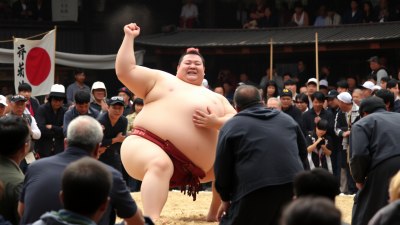The Culture of Sumo Wrestling and its Traditions
Explore the rich traditions and culture of Sumo wrestling in Japan.

Image created with Flux Schnell
Sumo wrestling, a unique and revered sport in Japan, dates back centuries and is steeped in tradition. This combat sport is not just about physical strength; it encompasses rituals, customs, and a way of life that reflects Japan's cultural heritage. Sumo wrestlers, or rikishi, follow a strict lifestyle that blends ancient practices with the modern world. Understanding the culture surrounding sumo wrestling provides insight into Japanese society and its values.
The Roots of Sumo
Sumo's origins can be traced back to ancient agricultural rituals where it was believed that wrestling would please the gods and ensure a bountiful harvest. The earliest evidence of sumo matches dates back to the 8th century, and it was originally associated with Shinto rituals. These early matches were often part of religious ceremonies, and the sport gradually evolved into the organized competition we recognize today.
Rikishi: The Wrestlers
Rikishi, or sumo wrestlers, dedicate their lives to the sport, often starting training at a very young age. The path to becoming a rikishi is demanding and requires immense discipline. Wrestlers move into a sumo stable, or beya, where they live and train under the guidance of a stablemaster, or oyakata. Life in a sumo stable is strict; it includes rigorous training, a regimented diet, and adherence to traditional customs. Wrestlers wear distinctive garments, such as the mawashi, a thick belt, and they often sport a chonmage, a traditional topknot hairstyle.
Training Regimen
Training for a rikishi involves intense physical activity designed to build strength, flexibility, and balance. Daily routines include a mix of shiko (leg stomping exercises), mat pulling, and salt throwing, which are believed to purify the ring. The training methods have remained largely unchanged for centuries, emphasizing the importance of tradition in the sport. Furthermore, younger recruits learn from established wrestlers, creating a mentorship system that reinforces the values and customs of sumo wrestling.
Rituals and Ceremonies
The rituals and ceremonies associated with sumo are deeply rooted in Shinto beliefs. Before each match, wrestlers perform a series of rituals including salt throwing for purification and the dohyo-iri, the entrance ceremony in which wrestlers display their prowess and engage in ceremonial movements to show respect to the ring. The dohyo, or wrestling ring, is the sacred space where matches occur, constructed from clay and rice straw—a combination that symbolizes both strength and fertility.
The Role of Gender in Sumo
Traditionally, sumo wrestling has been a male-dominated sport, with women facing restrictions regarding entry into the dohyo. However, women's sumo, or joshi sumo, has been gaining recognition and popularity, highlighting the evolving nature of the sport. Despite the ongoing challenges for female wrestlers, there has been a growing appreciation for their athleticism and the cultural significance of women's participation in sumo.
Competitive Structure
The competitive structure of sumo wrestling is organized into a series of tournaments held throughout the year. The six major honbasho, or official tournaments, feature rigorous bouts where wrestlers aim to achieve the highest rankings within the sport. Each rikishi is classified into divisions, with the top division known as the makuuchi. Performance in these tournaments plays a significant role in a wrestler's status, income, and public image, making each bout critical.
Fighting Techniques
Sumo wrestling might seem straightforward, but it involves a variety of techniques and strategies. Wrestlers use a combination of pushing, shoving, and throwing maneuvers to unbalance their opponents and force them out of the ring. The techniques employed can be complex, reflecting the skill and training of each rikishi. Common techniques include the yoritaoshi (body drop), oshidashi (push out), and kimedashi (force out), among many others.
Fashion and Identity
The attire worn by rikishi goes beyond mere function; it is a symbol of identity and tradition. The mawashi is not just a wrestling belt but also a testament to a rikishi's rank and skill. During ceremonial events, wrestlers wear elaborate and colorful keshō-mawashi, or ceremonial aprons, that showcase intricate designs and are often adorned with symbols of their stable. This connection to identity enhances the cultural significance of sumo in Japanese society.
Fans and Cultural Significance
Sumo wrestling enjoys immense popularity among both Japanese fans and international audiences. The atmosphere during matches is electric, with fans cheering for their favorite rikishi and engaging in traditional chants. The sport has long served as a source of national pride, and successful wrestlers often become cultural icons. Furthermore, sumo represents values such as honor, respect, and perseverance, making it an essential part of Japan's cultural narrative.
Modern Challenges
Despite its rich traditions, sumo wrestling faces modern challenges, including issues related to violence, hazing, and the mental well-being of wrestlers. Recent scandals have drawn attention to the darker aspects of the sport, prompting discussions about reforms and the need for modernization. As sumo continues to evolve, it must balance the preservation of its customs with the demands of contemporary society.
The Future of Sumo
As sumo wrestling approaches the future, there is hope for greater inclusivity and recognition of female wrestlers. The sport is also exploring ways to engage younger audiences through innovative outreach and educational programs. The preservation of traditions remains a priority, yet adapting to changing societal norms is crucial for ensuring the longevity of this cultural phenomenon.
Sumo wrestling encompasses far more than physical contests; it represents the synthesis of history, culture, and identity in Japan. The dedication of rikishi, the rituals, and the community surrounding the sport create a rich tapestry that reflects the values of Japanese society. As it navigates the challenges of modernity while honoring its traditions, sumo wrestling will continue to be a vital expression of cultural heritage for generations to come.











